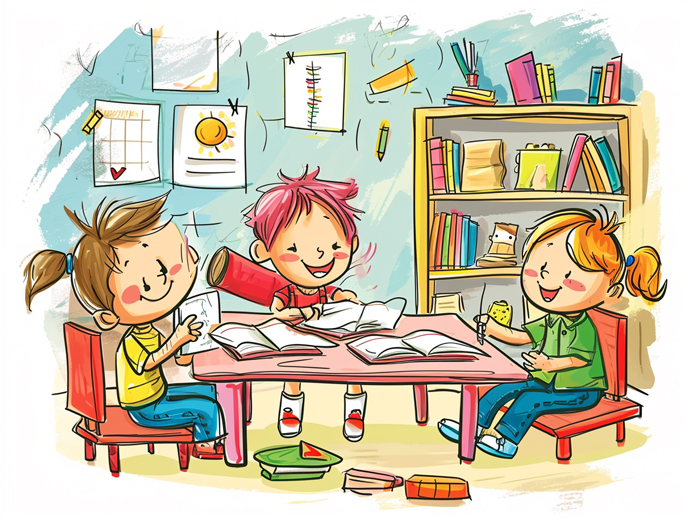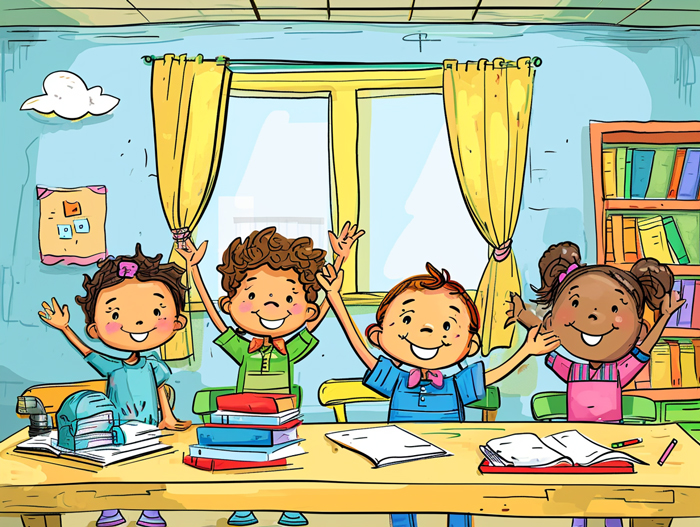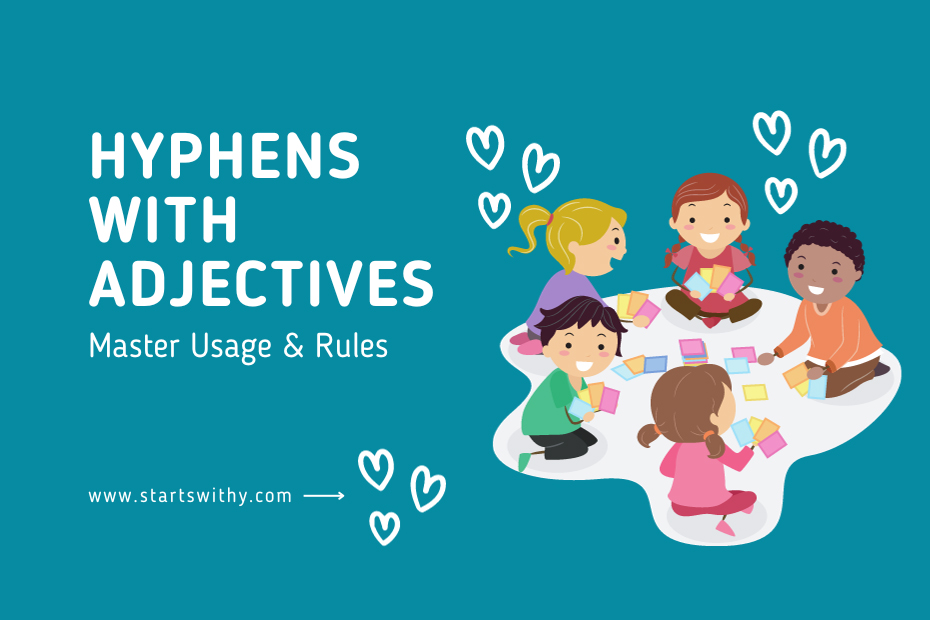Crafting clear and effective prose often hinges on the small details—and knowing when to use hyphens with adjectives is one such detail that can make a big difference. I’ve seen countless sentences lose their punch due to misplaced or missing hyphens, so let’s clear up the confusion.
Hyphens can be tricky little dashes, but they’re essential for creating compound adjectives that precisely describe nouns. They’re the unsung heroes that give sentences their clarity and prevent readers from stumbling over your words. Stick with me and I’ll show you how to wield hyphens with confidence.
Why are hyphens important in adjectives?
As I delve deeper into the nuances of English grammar, I find the role of hyphens in adjectives to be particularly fascinating. Hyphens have a significant job: they link words together to create cohesive, compound modifiers that give our sentences clarity and specificity. When we effectively use hyphens, we help readers visualize and comprehend the concepts we’re presenting.
Consider the phrase “high-quality teaching aids.” Without the hyphen, the meaning could become ambiguous. Does the phrase describe teaching aids that are high and of quality, or does it imply that the teaching aids are of high quality? Clearly, the latter interpretation is what we intend, and the hyphen is the lightweight yet sturdy bridge that connects “high” and “quality,” leaving no room for confusion.

Furthermore, hyphens are particularly crucial when dealing with numbers and age terms that act as adjectives. It’s the difference between “twenty odd students” and “twenty-odd students.” In the first instance, you might wrongly assume I’m describing a group of peculiar students; with the hyphen, it’s evident that I’m referring to an approximate number of students.
Let’s take a moment to review some key instances in which hyphens play a pivotal role:
- When we use compound numbers as modifiers, such as “a fifty-five-year-old teacher.”
- With fractions serving as adjectives, like “a two-thirds majority.”
- In phrases where an adjective and adverb come together to precedively modify a noun, such as “a well-known educator.”
My goal here is to empower educators, specifically those teaching our youngest scholars in kindergarten and preschool, with the tools to employ hyphens confidently. This knowledge isn’t just about following grammar rules; it’s about enhancing communication and ensuring that the path from the writer’s intent to the reader’s understanding is as smooth and direct as possible. Arming oneself with this understanding transforms the daunting task of teaching early literacy into a more structured and successful endeavor.
Hyphens with compound adjectives
When teaching the little ones in our classrooms, compound adjectives can be quite the puzzle. These are adjectives formed when two or more words come together to modify the same noun. I often find that using hyphens with them makes my sentences clearer and easier for children to understand.
Let’s say I’m describing a picture to my class that has a man holding a big, red balloon. If I refer to it as a “big red balloon,” without a hyphen, the description is still clear. However, when we’re dealing with more complex descriptions, hyphens are invaluable. I might have a “fast-moving car” which is a car that moves quickly, and without the hyphen, we might slow down reading, misinterpreting it as a car that is fast and moving.

In my lessons, I aim to use examples that will stick in young minds. Here are a few simple rules that I follow:
- Hyphenate when the compound adjective precedes the noun
- Example: an “attention-grabbing” story, not a story that is grabbing attention.
- Skip the hyphen when the compound comes after the verb
- Example: The story was “attention grabbing.”
I use a variety of activities to teach these concepts. For instance, matching games where kids pair sentences with and without hyphens to see the difference in meaning, or sentence construction exercises where they choose where the hyphen should go.
Understanding prefixes and suffixes also improves the use of hyphens since youngsters start identifying which word forms are compound adjectives. Prefixes like “self-” always need a hyphen (e.g., “self-aware”), which is quite straightforward for both me and my students to remember.
Teaching children about hyphens and compound adjectives is not just about rules; it’s about nurturing a sense of linguistic intuition. With consistent practice, kids begin to feel when a sentence flows better, all because of that little dash joining words together. And that’s a skill they’ll carry forward, from piecing together colorful stories to excelling in all their future writing endeavors.
When to use hyphens with adjectives
Teaching young minds about the intricacies of the English language involves sharing the subtleties of punctuation. An area that often trips up even seasoned writers is knowing when to hyphenate compound adjectives. As we guide children in their journey of linguistic mastery, it’s crucial to break down rules clearly and effectively. Children need to learn that hyphen use is context-dependent.
For compound adjectives, the rule of thumb is quite straightforward: when two or more words come together to modify a noun, they should be linked with a hyphen to clarify that they work as a single idea. This is to ensure that your readers understand exactly what you’re describing. For instance, telling kids about a fast-moving train helps them visualize a train that speeds swiftly; without that hyphen, the meaning could become blurred.
Consider the following instances when hyphenation is the right choice before a noun:
- Age terms: A five-year-old boy
- Fractions: A two-thirds majority
- All-inclusive terms: An all-in-one printer
- Dual heritage: An African-American community
It’s important to note that adjectives after the noun they describe usually do not require a hyphen. For example, the phrase “the child is five years old” flows without the need for any punctuation between the words describing age. This subtle yet important distinction helps avoid overuse of hyphens and keeps the prose clean and reader-friendly.
Moreover, compound adjectives created from an adverb ending in -ly and an adjective do not need a hyphen. Describing something as “beautifully embroidered fabric” is perfect as it stands because the -ly ending signals that both words individually modify the noun.
In practice, children’s books and learning materials should model the correct use of hyphens. By doing so, we build their understanding as they regularly encounter and become familiar with these punctuated expressions. Reinforcement through visual learning materials and classroom activities can fortify these concepts, making the guidelines not just learned but intuitively applied as they write their own stories and descriptions.
Teachers must tread carefully to ensure they’re cultivating this knowledge without overwhelming their students. These foundational lessons in punctuation will serve them well as they progress in their educational journey and encounter more complex writing tasks.
Examples of hyphens with adjectives
When teaching young minds, it’s critical to show them how hyphens can change the meaning of a sentence. I’ll start by exploring compound adjectives. These are two or more words that come together to modify a noun, needing a hyphen to avoid confusion. For instance, take the phrase “small-business owner.” Here, “small-business” explains the kind of owner I’m talking about – it’s not a small owner, but an owner of a small business.
Let’s consider another example. The difference between “a man eating chicken” and “a man-eating chicken” is vast. Without the hyphen, it sounds like someone is enjoying a meal. But with it, you have a terrifying chicken that preys on humans. This distinction is important to highlight because it clearly shows how punctuation changes context.
Another area to focus on with kids is numbers and age when used as descriptors. Instead of “a twenty five year old teacher,” the correct version is “a twenty-five-year-old teacher,” connecting the whole age descriptor.
Moving forward, I’ll introduce how to handle adjectives made from two words where one is an adverb ending in -ly. Interestingly, adverbs like “quickly” or “silently” don’t require a hyphen when teamed with another adjective. So, we say “a quickly moving stream” not “a quickly-moving stream.”
Why is this important? Well, precise communication hinges on these subtle cues. Plus, once the kids grasp the basic rules, they start noticing the patterns which can strengthen their reading and writing skills enormously.
One effective method is to immerse students in examples. Storytime can be an opportunity to point out hyphenated adjectives in action, and writing exercises can reinforce these concepts. By repeatedly seeing hyphenated adjectives in sentences they create or in the books they love, the knowledge becomes second nature.
To offer teachers a practical takeaway, I’ve crafted sentences that allow for engaging interactions with children:
- Describing animals: “The children saw a scary, six-legged creature.”
- Discussing weather: “We had a fun, snow-filled day.”
Understanding the nuances of hyphens might seem intricate at first, but with the right examples and practice, it’s a skill that can be seamlessly integrated into a child’s linguistic toolset.
Conclusion
Mastering hyphens with adjectives is a subtle yet powerful skill that enhances clarity in writing. I’ve shown you how these small dashes can make a big difference in preventing confusion and ensuring your prose packs the intended punch. Remember, fostering an early understanding of hyphen use in children is crucial for their development as proficient writers. By integrating my tips and examples into your teaching methods, you’ll help your students grasp the nuances of English punctuation. Let’s commit to using hyphens wisely and passing on the knowledge to the next generation of wordsmiths. Together, we’ll keep the art of writing clear and effective for years to come.




